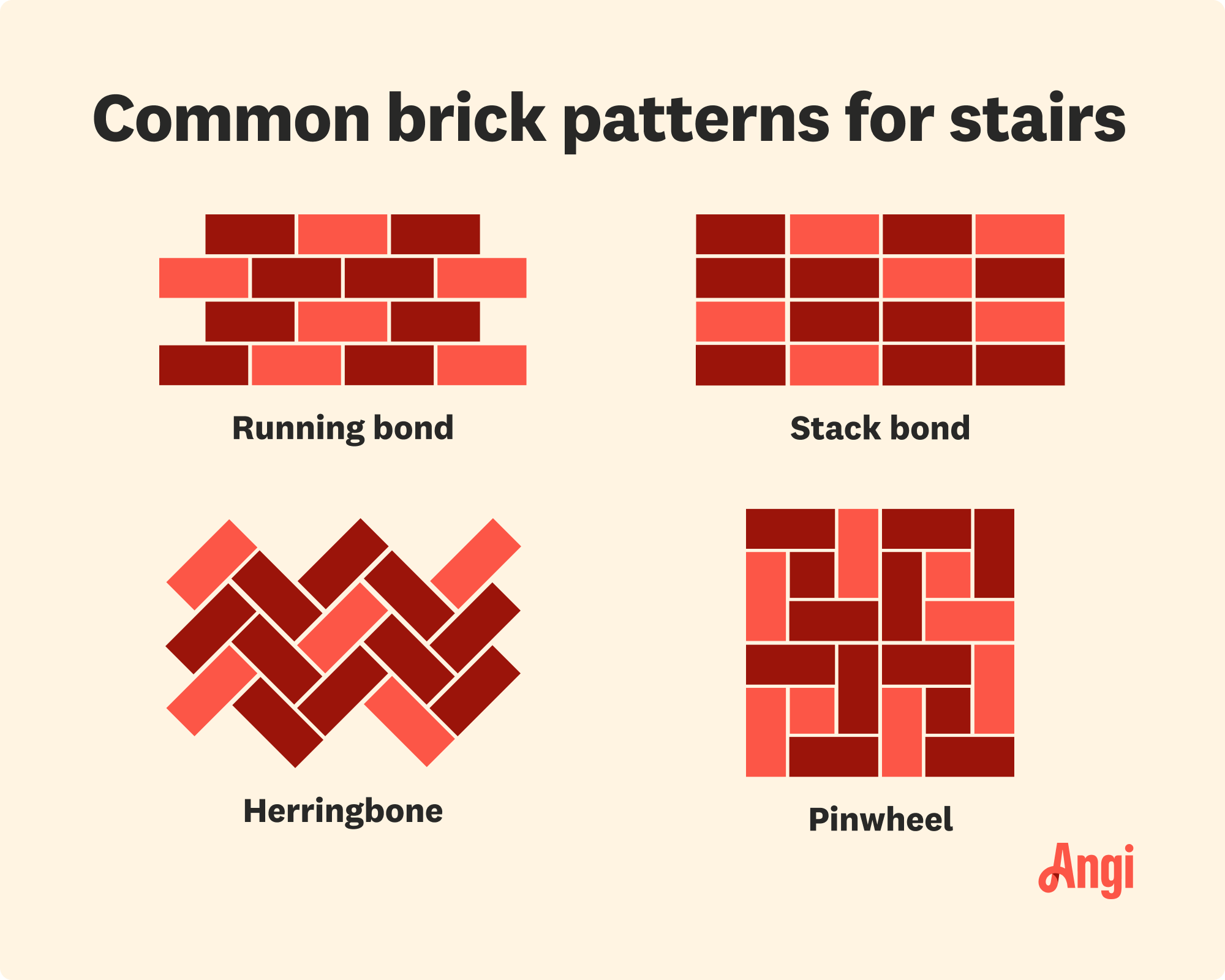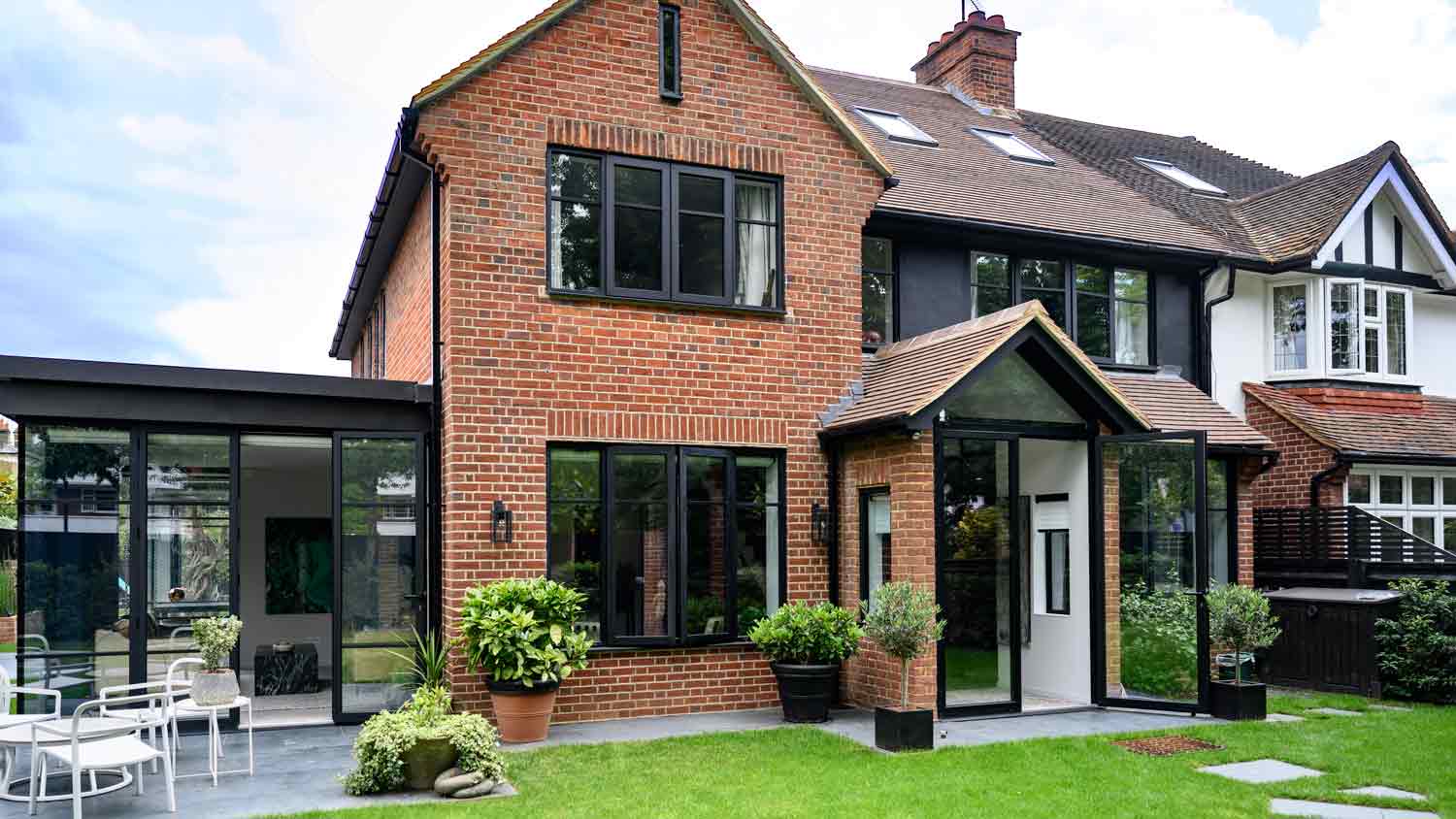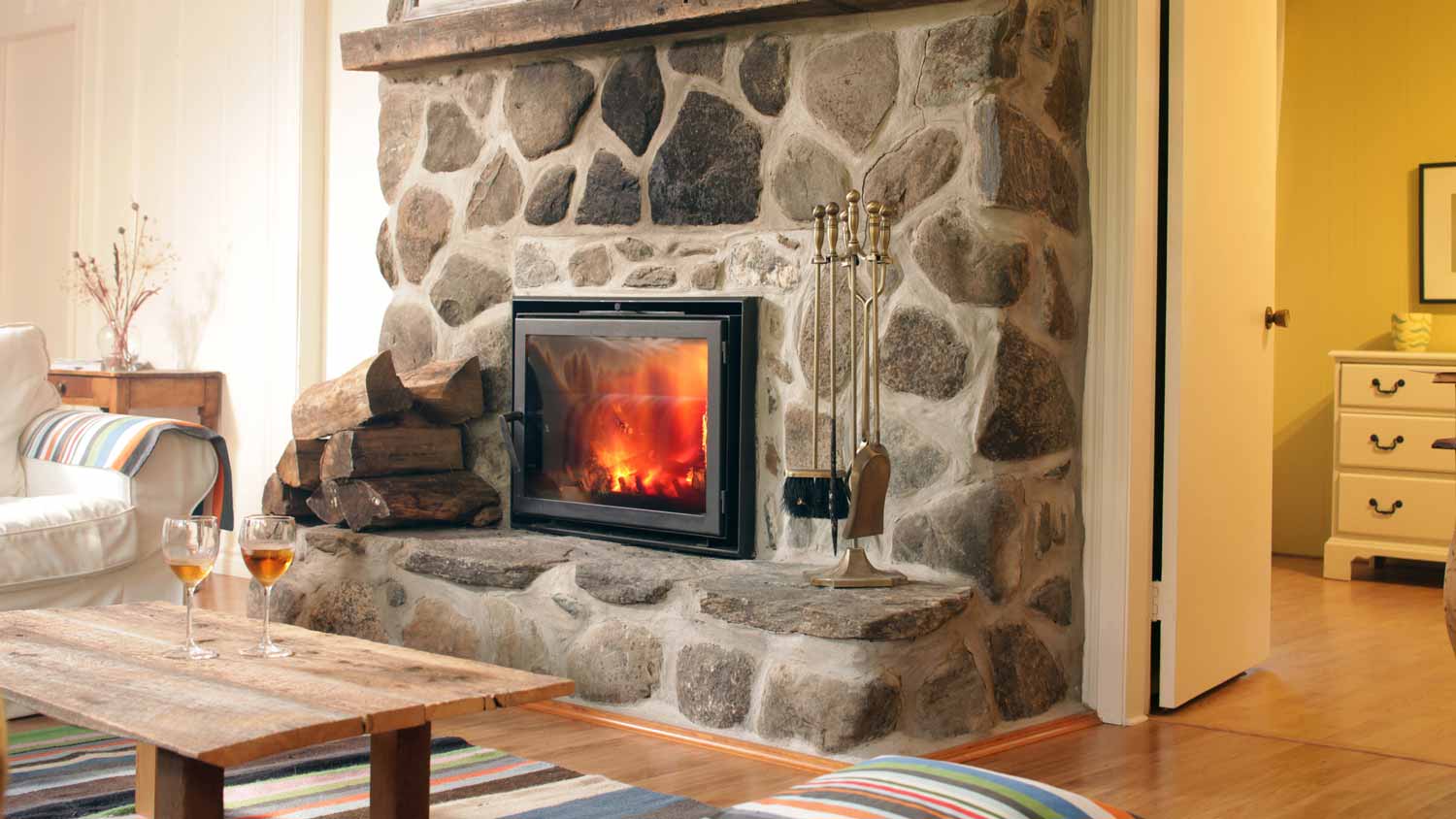
Discover the average stone restoration cost, including price ranges and key factors, to help you plan your next home project with confidence.
Masonry work costs depend on your project and location. Check with a local pro for your specific job.
Brick steps cost $20 to $30 per square foot on average.
Complicated brick patterns, like herringbone, take more time to install, so they’ll cost more overall.
Antique bricks are more costly than face bricks, and red bricks are the most cost-effective brick choice.
Masons charge $40 to $75 per hour.
Most brick front step replacement projects will cost between $2,400 and $3,050, depending on the type of brick you choose. When it comes to replacing your front steps and adding to your curb appeal, you can’t go wrong with the classic look of brick. You also have the option of adding accents with brick veneers and antique bricks, which can drive up costs. Whatever your vision is for your project, we walk you through potential costs below.
Your cost to replace brick front steps will typically range from $20 to $30 per square foot.
Ornate designs can go as high as $100 per square foot.
The average square footage of a single stair is around 10 feet, but front door steps, especially wide porch steps, can be double or triple that amount. As front step sizes and designs vary significantly, so do their costs.
For three front door steps, expect to pay between $1,200 and $2,700, and for six steps leading up to a wide porch entrance, it could cost $2,400 to $5,400.
Costs are significantly lower if you only need to replace one step or just a few bricks.
| Brick Steps Size (Square Feet) | Average Price Range |
|---|---|
| 10 | $200–$300 |
| 25 | $500–$750 |
| 50 | $1,000–$1,500 |
| 75 | $1,500–$2,250 |
| 100 | $2,000–$3,000 |
| 150 | $3,000–$4,500 |
| 200 | $4,000–$6,000 |
There are several factors that will impact your cost for this project. These include:
When old steps need to be removed before installing new ones, factor this into your budget. Step removal could cost anywhere from $200 to $800, depending on the size and number of steps involved. For the DIY savvy among you, you could save money by doing this work yourself. Always check with your contractor to ensure there aren’t any technical considerations.
The cost to replace three 48-inch-wide basic brick front steps will be less than replacing eight 60-inch-wide porch front steps. The average cost per step is between $600 and $900, but it could be less than this for a narrow step design and more for wide porch steps.
Most masons charge around $40 to $75 per hour, with a typical minimum fee of $200 to $400 that will cover the first few hours of labor.
You can also ask a pro for a fixed rate. “We always ask for a fixed price to do demolition and rebuilding,” says Tschudi, Angi Expert Review Board member and Raleigh, NC-based general contractor. “If you pay hourly, things tend to slow down a bit and you’ll pay a lot more than you anticipated.”
While this tacks on higher expenses, the expertise of a pro will ensure your front steps are safe, durable, and structurally sound.
Brick prices range from $0.50 to $6 apiece, depending on the type of bricks you choose to replace your front steps. Classic clay usually goes for less than $1 per brick, while concrete can go as high as $6 per brick.
Adding thin decorative brick veneer versus bricks on top will set you back $1.20 to $1.80 apiece. Rare antique bricks can cost $7 to $10 per brick, although, with some research, you may find old bricks available for recycling.
| Brick Step Material | Average Cost (per Brick) |
|---|---|
| Clay | $0.50–$3 |
| Veneer | $1.20–$1.80 |
| Concrete | $0.60–$6 |
| Antique | $7–$10 |
The more time a mason has to spend on installation, the bigger the budget you need. That’s why the brick pattern you want plays a part in costs. Simple running bond or stack bond patterns are easier to install than a zig-zag herringbone pattern or the cut bricks needed for a pinwheel bond.

You might want your local brick paver to build a new walkway, wall, patio, driveway, or porch to match the new brickwork on your steps. Doing this as a combined, rather than a separate, job can save you money. For example, the cost to build a paver patio with bricks ranges from $2,400 to $7,000.
Red bricks are the first image that comes to mind when you think of brick steps. Although these are classic, there are other options if you’d like to get creative. Here are the main types of brick you’ll have to choose from.
| Red Brick | Face Brick | Antique Brick |
|---|---|---|
| Classic look | Standard look | Unique look |
| Structural | Decorative and structural | Decorative and structural |
| Least expensive | Mid-range price | Most expensive |
| Very strong | Very durable | May not be strong |
Red bricks are typically made of clay and cost $0.40 to $0.90 per brick or between $400 and $900 per every 1,000. These classic bricks offer a timeless look—and durability to boot.
Face bricks are thin bricks that usually go for about $1.20 to $1.80 apiece. They are decorative veneers that can add different colors and textures to your brick steps. Consider adding these atop the bricks on your risers for extra visual effect.
Antique bricks are much pricier, costing between $7 to $10 per brick (or possibly more). Still, they offer unique and rare features that will make your brick steps one-of-a-kind. Matching bricks to your historic home will add character to your exterior, but also add time and costs to your project. What you’ll pay depends on factors, such as color, firing method, stamping, and the history behind them.
| Brick Type | Average Cost (per Brick) |
|---|---|
| Red bricks | $0.40–$0.90 |
| Face bricks | $1.20–$1.80 |
| Antique bricks | $7–$10 |
Hiring a brick paver pro near you will cost between $40 to $75 an hour for labor. However, due to the complications that can arise from incorrect installation, we recommend leaving the majority of this task to a professional.
“The best choice for a DIYer is to take on the things that you can do, such as the removal of railings and demolition of an existing staircase. You’ll find that masonry contractors will be happy to let you do the muscle work so that they can focus on rebuilding,” states Tschudi.
Installing bricks is trickier than you think. Here’s why you should hire a pro instead of doing it yourself:
The pros have the knowledge, tools, and equipment required to ensure the installation is done safely and correctly.
Professionals can address issues that could cause problems later, such as an uneven foundation or poor drainage.
Brick pros can recommend the best materials that suit your specific needs, taking into account factors such as climate conditions, aesthetic appeal, and durability.
DIY mistakes from improper installation can cause structural problems, tripping hazards, and other issues, which can lead to costly repairs.
Reputable companies will offer warranties on their work and materials.
While it’s best to leave the installation to the pros, there are a few things you can do to save on labor:
Gather the necessary supplies and equipment to demo steps yourself and prepare the area for installation.
Remove railings and demo the existing steps.
Clean up debris and properly dispose of materials.
Schedule installation during the off-season and opt for a simple design to save on labor costs.
Verify the credentials of your brick pro and ensure they are licensed, bonded, and insured.
Discuss which materials the pro recommends will fit your budget, climate, and aesthetic.
If there is money left in your budget, talk to a brick pro about add-on services, such as a new walkway, patio, or porch.
Home is the most important place on earth, which is why Angi has helped more than 150 million homeowners transform their houses into homes they adore. To help homeowners with their next project, Angi provides readers with the most accurate cost data and upholds strict editorial standards. We extensively research project costs to develop the pricing data you see, so you can make the best decisions for you and your home. We rely on reputable sources, including the U.S. Bureau of Labor Statistics, academic journals, market studies, and interviews with industry experts—all to ensure our prices reflect real-world projects.
Want to help us improve our cost data? Send us a recent project quote to [email protected]. Quotes and personal information will not be shared publicly.
From average costs to expert advice, get all the answers you need to get your job done.

Discover the average stone restoration cost, including price ranges and key factors, to help you plan your next home project with confidence.

Need to repoint brick in your home to make your home look fresh and new? Use this guide to repointing brick cost to price out your project before starting.

Door or window lintel replacement costs $400 on average, but there are ways you can save. On the other hand, complicated work will increase costs considerably.

Learn about the five common causes behind black stains on your brick and how to remove them effectively, either by yourself or by hiring a pro.

Discover the average stone fireplace cost for your home. Learn about installation prices, cost factors, and ways to save before starting your stone fireplace project.

Everything you need to know about repointing brick: benefits, how it works, basic procedure, cost, and who to hire for the job.